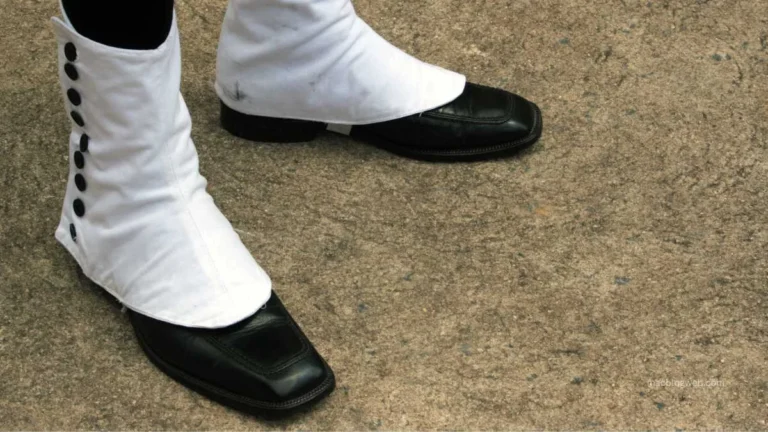Spats, once a quintessential part of men’s fashion and to a lesser extent, women’s attire, represent an intriguing chapter in the history of clothing. Predominantly used during the late 19th and early 20th centuries, these distinctive shoe accessories offer a fascinating glimpse into the sartorial norms and social mores of their time. This article delves into the history, purpose, and eventual decline of spats, exploring how they transitioned from practical attire to a statement of elegance, and ultimately to obsolescence.
Origin and Description
Spats, short for “spatterdashes,” are protective coverings that extend from the ankle to just above the shoe. They were typically made from white cloth, grey or brown felt material, and featured a series of buttons along the side, making them easy to put on and take off. Initially designed to protect the shoes and socks from mud and rain, spats quickly became a symbol of refined fashion. The design of spat allowed them to snugly fit around the wearer’s ankle, providing a sleek and polished look.
Spats in Fashion
In the late 19th century, spats became highly fashionable in Western society. They were often seen on the streets of London, Paris, and New York, sported by the well-to-do gentlemen of the era. The accessory was not just a functional item but also a marker of style and class. Spat were frequently worn with morning dress or full evening dress, complementing the tailored and structured look that was popular among affluent men.
Emily Post, the famed American author on etiquette, noted in her 1931 book Etiquette: The Blue Book of Social Usage that “spats are optional. If chosen, they must match the gloves exactly.” This statement underscores the importance of spat in the overall aesthetic and harmony of men’s formal attire.
The Royal Influence and Decline
The royal family in Britain, particularly King George V, played a pivotal role in both popularizing and later signaling the decline of spats. During significant events such as the opening of the Chelsea Flower Show in 1923, King George V was observed wearing spat, which solidified their status as a fashionable accessory. However, in a dramatic turn of fashion in 1926, the King appeared in a morning coat without spat, deviating from the traditional frock coat attire. This change was noted by the public and marked a significant shift in fashion, emphasizing a move towards more modern and less formal styles.
Women and Spats
While spats were less common among women, they did occasionally wear them, particularly in the early 20th century. However, the 1920s brought about significant changes in women’s fashion, including rising hemlines and the popularity of open-topped shoes featuring straps and cutouts. These changes made spat less practical and desirable, as fashion began to emphasize the visibility and design of women’s footwear itself, rather than accessories that covered them.
Cultural Reflections
The rise and fall of spats are reflective of broader cultural shifts. The early 20th century was a period marked by stark contrasts between formality and the gradual relaxation of social and fashion norms. The eventual decline of spat mirrored the increasing informality in everyday attire and the desire for a more practical and less restrictive wardrobe that characterized the decades following the 1920s.
Legacy
Today, spats are rarely seen outside of historical and period costume contexts, such as theatrical performances or reenactment events. However, their impact on fashion and their role as a cultural artifact continue to be of interest to fashion historians and enthusiasts. Spat remind us of a bygone era where fashion was as much about function as it was about flaunting one’s social status and adherence to etiquette.
Conclusion
The history of spats offers a window into the past, providing insights into the evolution of fashion trends and their interconnection with societal changes. From their practical beginnings to becoming a hallmark of high fashion, and eventually falling out of favor, spat exemplify how clothing items can rise to prominence and then become obsolete. As fashion continues to evolve, the story of spat remains a fascinating example of how style is influenced by, and in turn influences, the norms and values of its time.
